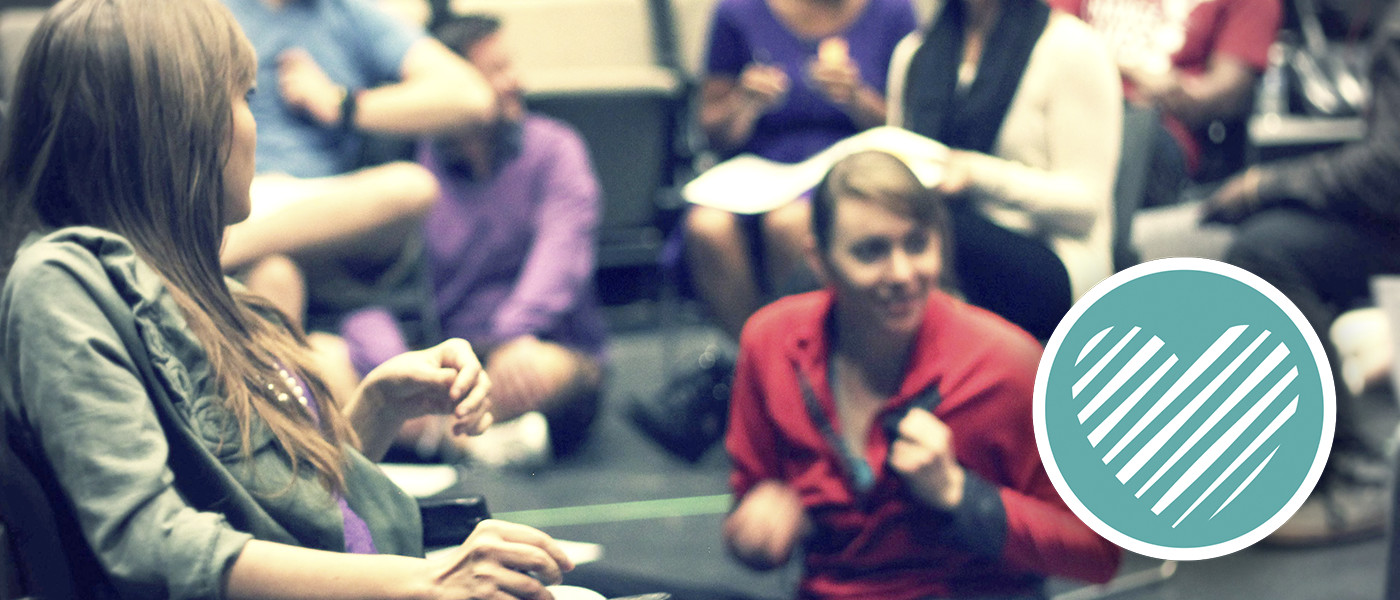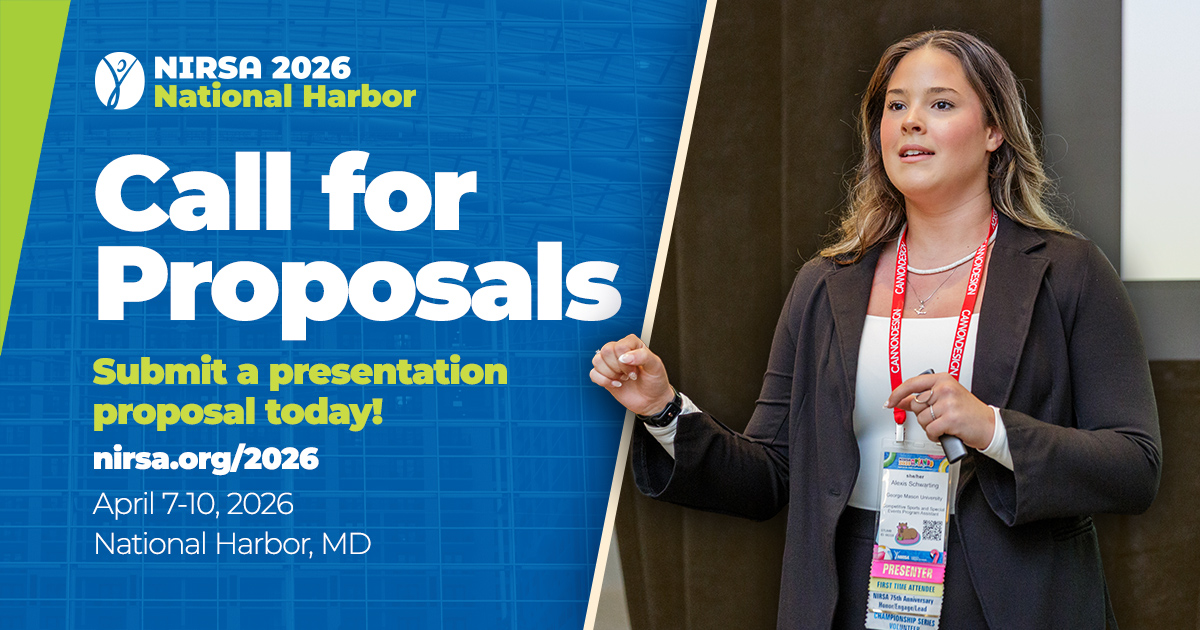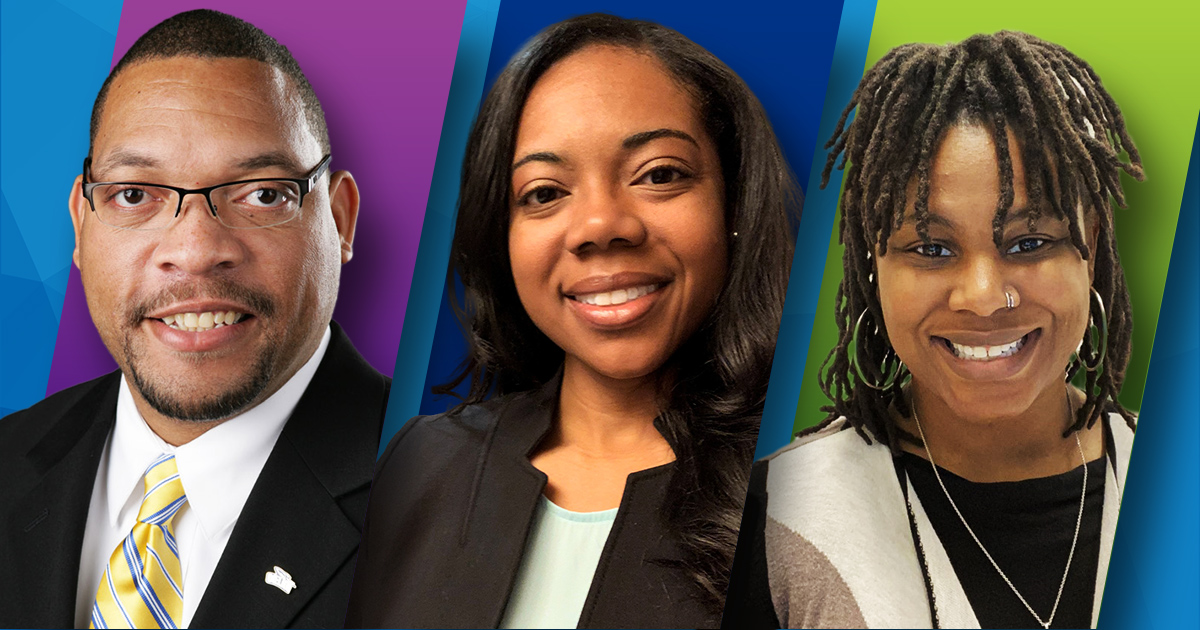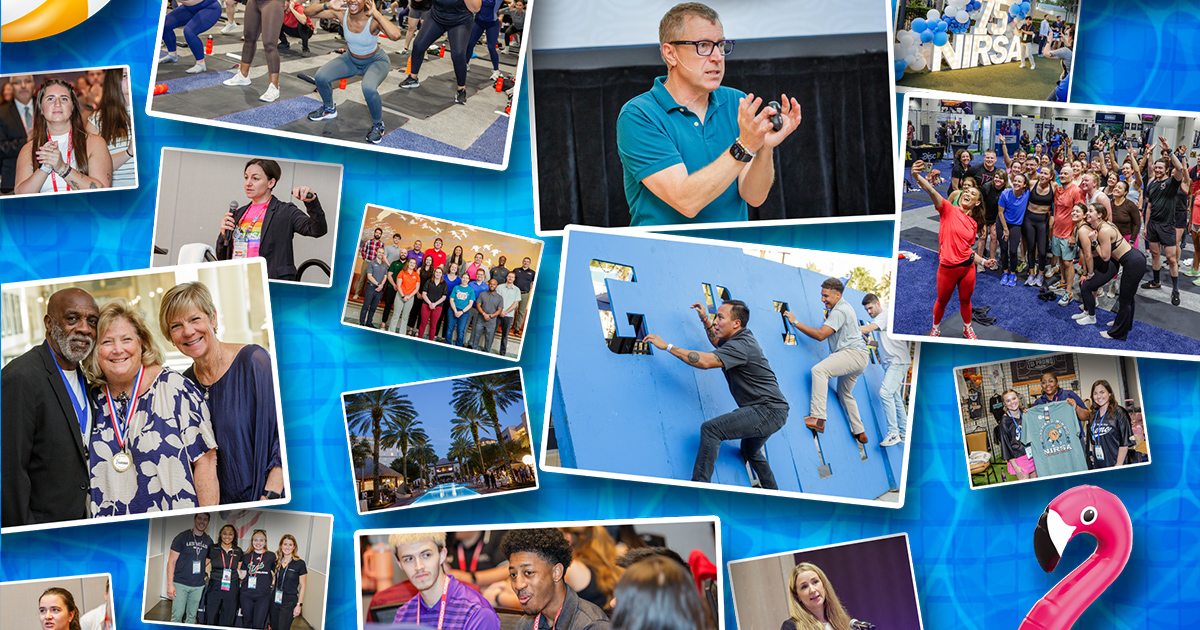By Luda Gogolushko, CEO & Founder of INCLUDAS Publishing and member of NIRSA’s Commission for Equity, Diversity, and Inclusion
If someone had asked me what I thought inclusion or diversity meant three years ago, I probably would had stared up at the ceiling pondering how to best answer the question without sounding clueless. Truth was, no one talked about diversity or inclusion in the workplace or the recreational space the way it should have been talked about. Sure, from time to time people asked me for tips and advice about accommodating someone in a wheelchair because they’d see me rolling around everywhere in my power wheelchair. But accommodation is not what inclusion or diversity are really all about.
What excites me most about diversity is that it’s like a field of differently-aged, multi-experienced, variously-shaped, colorful flowers. There are so many to embrace and doing so with open arms is extremely rewarding. Life is meant to have beautiful plants that bring different qualities and resources to the world. If there was no diversity in flowers, much would be lost.
Within NIRSA, the Equity, Diversity, & Inclusion (EDI) Commission emphasizes the importance of diverse domains across the human spectrum. Individual differences across race, ethnicity, culture, age, gender, sexual orientation, gender identity, ability, national origin, veteran status, social economic class, religion, and professional status all add to the richness, texture, and beauty of the human bouquet.
Thoughts can do so much, but actions are the pillars of change
Diversity can only happen with inclusion in mind. Inclusion should really focus on fostering a welcoming culture for all. All—a complex three-letter word that has no beginning and no end. Thinking about it on those terms can make the challenge feel overwhelming, but as an aspiring or current recreational professional, it is important to have inclusion come from within and grow outwards. Because if you’re not tackling and celebrating inclusion internally, it will be almost impossible to achieve it externally.
I didn’t know how to use my strength to give voice to these complex topics that I myself didn’t understand.
It took me years of personal experience and active researching to really grasp an understanding of inclusion. That was because for so long all I knew was exclusion. All I experienced was exclusion. All I felt was segregation. All I saw was discrimination.
I’d heard everything. People’s comments ranged from, “They wanted a mixed staff, so the only reason you got the job was because of your wheelchair” to “Thanks for volunteering, but you might have to leave soon because your chair is taking up too much space.” But I didn’t know then that it was not okay to be treated like that. I didn’t know how to use my strength to give voice to these complex topics that I myself didn’t understand. And at the time, I didn’t know that voicing my concerns was the right thing to do. I had always felt more like an inconvenience than a welcomed part of the community or culture.
I was an outcast, a literal outsider. I was different and the actions and reactions of so many—whether knowingly or not—highlighted those differences and built up barriers between us. This partly had to do with being in a place where inclusion and diversity were not freely talked about. I thought at the time that if I was the only one feeling excluded, surely the problem was with me. And while no one talked about inclusion, more importantly, no one was talking about exclusion.
A turning point
A major reason I deeply understand and implement inclusion in my daily life today is because of my recent experiences with NIRSA. I joined the EDI Commission in May of 2013, and in 2014 and 2015 I attended the NIRSA Annual Conference where I was able to conduct an inclusion audit from the perspective of someone in a wheelchair. There were a lot of things that I examined: website content, physical space, personal interactions, access to information, and support offered. All of those elements are important, but more importantly for me, that journey forced me to really find the inner strength to voice my moments of inclusion and exclusion—to not feel guilty about speaking up for my right to be included.
I am not afraid to ask a million questions because my one question today may help include a person in the future.
Along the way, I learned that:
- I have a right to speak up because I have a right to participate
- I value my time and experience
- I am not afraid to put people in their place when it comes to my inclusion rights and requests
- I am not afraid to ask a million questions because my one question today may help include a person in the future
- I am not intimidated by people who belittle or make me feel unimportant because I deserve inclusion
Sometimes, efforts toward inclusion can be difficult to implement, but NIRSA not only examined my inclusion report, they learned from it and implemented many of the recommendations it outlined. Some of these changes include:
- Significant updates have been made to the website and registration forms to make the language more inclusive
- An accessible registration desk that is at a lower height which is more inviting for individuals in wheelchairs or electric scooters
- Signage pointing to elevators around meeting areas and make sure that property maps include all elevator locations
- Only negotiating contracts with transportation companies that have operating lifts on their buses and drivers certified to use them
- During general sessions and the Honor Award Banquet, a member of NIRSA HQ staff is on hand to arrange inclusive seating with colleagues for individuals who use mobility chairs or scooters
Every day, I have to adapt to an able-bodied world that is run by able-bodied people primarily for other able-bodied people. So it’s nice to see so many professionals, students, and organizations thoughtfully working to make places of recreation inclusive and adaptable for everyone involved—because everyone deserves a chance to live a healthy lifestyle with acceptance and welcomeness. My hope is that you will engage with inclusion on a personal, professional, or social level to keep the ball rolling in whichever way that suites you best.
Moving forward
While there is much to celebrate, it’s important to remember that inclusion does not happen overnight. Feel free to check out these helpful tips to get you started in getting into a mindset of inclusion:
While there is much to celebrate, it’s important to remember that inclusion does not happen overnight.
- Know that it’s okay to feel confused by inclusion/diversity; it’s okay to not know, but at least be aware and be prepared
- Ask the right people your questions because doing nothing will never lead to inclusion
- Take on an adaptability approach rather than a forceful approach
- Know your inclusion boundaries and limitations; your inclusion role is different when you are on the clock than when you are off it
- Give different mediums of expression; not everyone likes to communicate or offer feedback in a group setting or a one-on-one session, some might prefer to write it out
- An individual who is there to play is not there to fix inclusion gaps; that person is not an inclusion experiment
- Challenge yourself with little tasks and document your relationship with inclusion/diversity
As many of you plan for Kissimmee to attend the 2016 NIRSA Annual Conference & Recreational Sports Exposition, I invite you to go with an open mind and an inclusive spirit since equity, diversity, and inclusion should be at the heart of a strong core and a bright future for collegiate recreation. Take every opportunity to mentally take note of the inclusion or exclusion you notice at the conference, and enlighten yourself with everything the conference has to offer. And if our paths ever meet, I will surely ask you what inclusion and diversity mean to you in hopes that you won’t cluelessly stare up at the ceiling, unsure of how to answer that question
Photos courtesy of INCLUDAS Publishing.
For more information about NIRSA’s Commission for Equity, Diversity, and Inclusion, please visit the NIRSA website. Information about INCLUDAS Publishing is available at includas.com.







